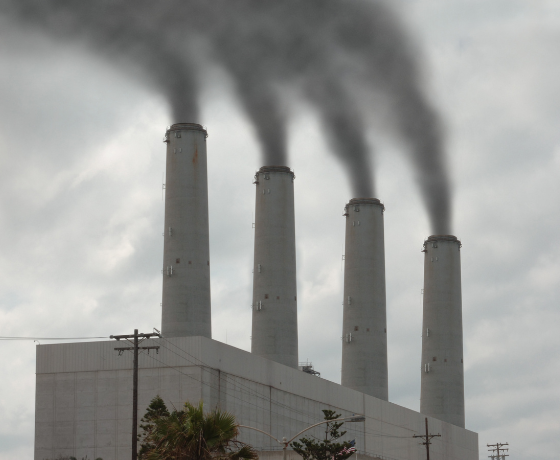From small high school classrooms to large, industrialized research facilities, lab exhaust fans can be found on rooflines in all colours, shapes, and sizes. They are responsible for removing potentially harmful airborne contaminants from our precious indoor environment, keeping us safe. But where does all that go? How do we ensure that nasty air doesn’t cause problems elsewhere?

|
Figure #1: Wind Characteristics Affecting Plume Rise |

Luckily, there are several constantly updated standards and guidelines to follow, depending on the type of lab in question. One common detail across all these standards and guidelines includes the calculation to determine Plume Rise (hr) and Total Effective Plume Height (he). Plume Rise is the vertical distance between the discharge point of an air stream into the outdoors, to the highest point attained by the centerline of that air stream, as seen in Figure #2.
he = hr + hs
-
- Total Effective Plume Height (he)
- System/Fan Height (hs)
- Plume Rise (hr)
|
Figure #2: Effective Plume Height |

Traditionally, large, tall stacks were used to drive contaminated air up as high as possible. The contaminated air is then diluted and dispersed far away from the breathing zone of building personnel or the general public. For many years, the simplified Briggs equation was used to determine the plume height (hr):
hr = 3VD ⁄ U
- Discharge Velocity, FPM (V)
- Nozzle diameter, ft (D)
- Wind Speed, ft/min (U)
Although this formula is simple and easy to calculate, having large stacks 100 ft tall is not practical for every lab application, and thus, neither is this simple, and sometimes inflated, Plume height calculation. Starting in 2011, the industry standards and guidelines adopted a newer, more complete calculation, introducing new parameters such as wind profiles, building height, and surface roughness (terrain category). These new parameters allow for a more accurate, yet deflated calculation based on jet momentum rise, to determine the effective plume rise. The detailed calculation can be found within the ASHRAE Handbook – HVAC Applications from 2011 onward. It is best to utilize computer-based software (like the one found within the Skyplume Select program) to run this calculation. For reference, the calculation is based on the following variables:
- β = stack capping factor: 1.0 without cap, 0 with cap
- x = distance downwind of stack, ft
- Ve = stack exit velocity, fpm
- Ae = area of exhaust
- UH = wind speed at building top, fpm
- H = building height above ground level, ft
- U* = friction velocity, fpm
- zo = surface roughness length, f
The most differentiating new parameter is the surface roughness length, or terrain category, which takes the area around the exhaust fan into account. Below are the roughness length factors of the 4 different terrains, with the largest factor having the greatest effect on the effective plume rise.
|
1. Flat, Water, Desert |
0.03 |
|
2. Flat, Airport, Grassland |
0.16 |
|
3. Suburban |
2.1 |
|
4. Urban |
6 |
To demonstrate how much the terrain category impacts our plume rise calculation, a comparison of the effective plume rise of a single fan can be seen below, showing the original Briggs calculation, as well as the post 2011 calculation with varying terrain categories:
|
Calculation |
Terrain Category |
Effective Plume rise |
|
2007 (Briggs) |
N/A |
25.8ft |
|
2011 (ASHRAE) |
1. Flat, Water, Desert |
24.9ft |
|
2011 (ASHRAE) |
2. Flat, Airport, Grassland |
21.46ft |
|
2011 (ASHRAE) |
3. Suburban |
14.66ft |
|
2011 (ASHRAE) |
4. Urban |
10.72ft |
As you can see, there is a major decrease in the calculated effective plume rise as the area around the installed exhaust fan densifies. This is important to consider when designing lab exhaust systems found in cities and University campuses, as it will have a large impact on the required exhaust fan and nozzle sizing to meet and maintain the required total effective plume height that is acceptable for each application.
When applied correctly, a lab exhaust fan system will effectively remove contaminated air from within the lab spaces, and exhaust that air high enough and with the appropriate dilution and dissipation to maintain the health and well-being of the personnel within the lab, as well as within the surrounding general area. Utilizing the correct calculation method when selecting and sizing lab exhaust fans is a critical step in achieving an all-around safe environment.

If you have more questions or need assistance determining the right fan selection and plume rise for your specific lab application, please contact your HTS contact or fill out the form below!

